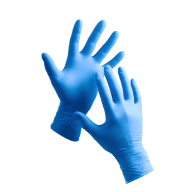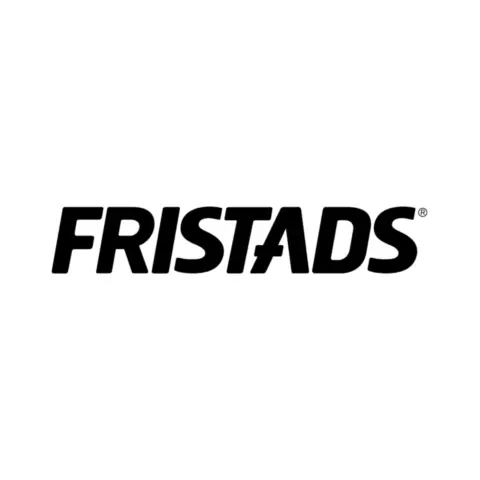Fristads Flame Retardant Welding Coverall 8044 WEL
Fristads
visit storeProduct description
Flame retardant open face protection suitable for heavy duty welding, with welding class 2 protection. The material is strong and durable cotton, which is pleasantly soft in use. 79% cotton, 20% polyester, 1% antistatic fibre.
Reinforcements: 98% aramid fibre, 2% antistatic fibre.
Safely and conveniently carry your phone. The phone pocket keeps your device secure and accessible, offering practical storage on the job.
Designed to hold protective knee pads, these pockets provide enhanced comfort for tasks requiring kneeling. Ensures protection and reduces strain.
Measured in grams per square meter (g/m²), indicating fabric density and durability. Higher values offer more protection and insulation for demanding work environments.
Indicates how the waist is designed and adjusted (elastic, drawstring, belt) for secure fit, comfort during movement, and proper protection in work environments.
- Welding
- Machine Washable
- Electrical Protection
Request a free sample
Test first and buy later. Visit any product page to request your free sample.
Standards and labels
EN IEC 61482-1-2:2018 is a European standard that specifies the safety requirements and test methods for clothing that is worn to protect the wearer from thermal hazards such as heat and fire. The standard lays out the minimum safety requirements for the design, construction and performance of the clothing, as well as the test methods for measuring its effectiveness in protecting the wearer from thermal hazards. Test results may include information on the clothing's thermal protection performance, flammability and other safety features. This standard is intended for use in industrial environments where the risk of thermal hazards is present, such as in welding, metal cutting and other operations that generate heat or fire. This standard applies to flame-resistant clothing for thermal hazard protection, and it includes the test methods to determine the thermal protection performance of materials and clothing.
Test results
Low-voltage Circuit Arc APC 1The standard EN IEC 61482-1-2:2018 outlines methods for testing the protection level of materials and garments against the thermal hazards of electrical arcs. Specifically, the APC (Arc Protection Class) 1 rating indicates a specific performance category under this standard, which reflects the minimum level of protection offered by the material or clothing against the thermal effects of an electric arc. The test method used involves a directed and constrained arc, commonly known as the 'Box test'. In this method, the sample material or garment is exposed to a defined electric arc within a controlled box setup to simulate realistic arc flash conditions. The parameters like arc current, duration, and the geometry of the setup are defined strictly to ensure reproducibility and comparability of results. The APC rating derived from this test provides essential data for industries, where workers are exposed to electrical hazards, enabling the selection of appropriate safety clothing that meets regulated safety standards to protect against potential thermal risks posed by electrical arcs. This testing not only assures compliance with safety regulations but also significantly contributes to the enhancement of occupational safety in environments with electrical arc hazards.
EN 13034:2005 is a European standard that outlines the requirements and test methods for Type 6 protective clothing designed to provide protection against liquid chemical hazards. It specifies criteria for the fabric's resistance to penetration by liquid chemicals and establishes guidelines for the overall design and construction of the garments. The amendment A1:2009 introduces updates and refinements to enhance the performance and reliability of Type 6 protective clothing, ensuring improved protection for workers exposed to liquid chemical splashes and sprays. These standards are essential in industries where workers are at risk of encountering liquid chemical hazards, ensuring their safety and well-being.
Test results
Liquid Chemical Protection Type 6 PBEN 13034:2005+A1:2009 specifies the performance requirements for protective clothing that offers limited protection against liquid chemicals, identified specifically as Type 6 PB (partial body protection). The 'Type 6 PB' designation implies that the protective garment has been tested and confirmed to provide effective defense against light spray and minor splashes of liquid chemicals, but only for parts of the body such as aprons, sleeves, or boots rather than full body suits. This standard tests the fabric's barrier effectiveness by applying a defined volume of liquid to the garment and assessing any penetration or repellence under controlled laboratory conditions. Garments achieving Type 6 PB classification are crucial for tasks in industries like chemical processing or handling where full body coverage is unnecessary, thereby offering flexibility and targeted protection, reducing the risk of chemical exposure to critical areas of the body.
EN 11611:2015 is a European standard that specifies the requirements for protective clothing for use in welding and allied processes. This standard defines performance requirements for material, design, and testing of clothing that protects the wearer from heat and flames. Testing includes measuring the clothing's resistance to heat and flame, as well as its ability to self-extinguish. Pass/fail results are based on the clothing meeting or not meeting the specified requirements.
Test results
Welding Protection Class 2The EN 11611:2015 standard specifies safety requirements for protective clothing used during welding and allied processes. Class 2 under this standard, which indicates a result of Visible: 85% - 100%, means that the protective clothing offers a high level of protection, effectively blocking the majority of hazardous exposure associated with welding activities. Specifically, this class is designed for use in environments where hazards are more severe or exposure levels are significantly higher. The test method for determining this classification involves subjecting the fabric and design of the protective clothing to a series of tests that simulate the conditions and hazards typically encountered in welding operations, such as exposure to radiant heat, sparks, and spatter from the welding process. The practical implication for procurement professionals is that Class 2 garments complying with EN 11611:2015 are suitable for high-risk welding tasks, providing more robust protection to the wearer under more intense working conditions.
EN 13688:2013 is a European standard that specifies the performance requirements for protective clothing. The standard includes requirements for safety, comfort, and durability, as well as tests for determining these properties. Protective clothing includes items like coveralls, aprons, and gloves that are worn to protect the wearer from hazards. Possible test results include resistance to chemicals, heat, abrasion and tearing, as well as breathability and comfort. The clothing can be tested under different conditions to check if it meets the standard's requirements.
Oeko-Tex Standard 100 is a product certification program for textiles, which is awarded by the Oeko-Tex Association. This program verifies that the textile products are free from harmful chemicals. To be able to use the Oeko-Tex Standard 100 label, a product must meet certain requirements set by the Oeko-Tex Association which include limits on the levels of harmful substances such as pesticides, heavy metals, and formaldehyde. The textile products are inspected and certified by Oeko-Tex, they can use the Oeko-Tex Standard 100 label on their packaging to show that they are free from harmful chemicals. This certification is for all types of textiles, from raw materials to finished products, and it is globally recognized.
Fristads delivery terms
Free delivery for all Fristads products
444,86 €
Free delivery
Sold in units of one piece
Need larger quantities?
Other products you may like
Recently viewed
Need help?
Get help from our experts
Other products you may like
Similar products you may like
Fristads
Delivery time: 3 business days
Supplier shipping fee 7,94 €
Free shipping on orders over 150,00 €



Find +150,000 products from hundreds of brands
Autonomous sourcing platform
The most efficient way to source and order supplies for your operations
Sourcing
Ordering
List products you’re looking for and we’ll find the best products and prices for you – all for free.
Need help?
Get help from our experts




